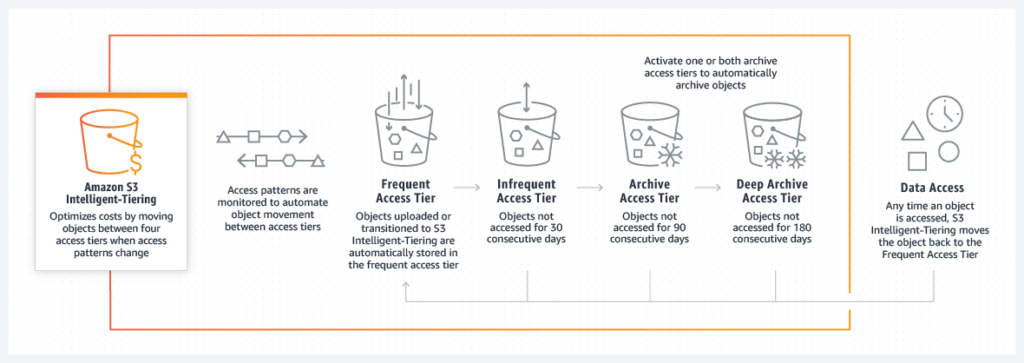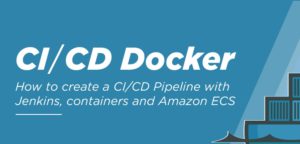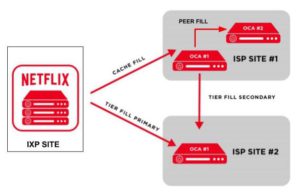AWS announced a few features and changes to their storage approach for S3 and Amazon Elastic File System (EFS) regarding Intelligent Tiering options during the recent AWS Storage Day. The updates and changes will allow customers to leverage S3 and EFS more efficiently and cost-effectively.
The usage conditions for the Amazon S3 Intelligent-Tiering storage class are updated. There is no longer a minimum storage duration for all objects stored in this storage class, and monitoring and automation charges for objects smaller than 128 KB have been removed. Initially, when AWS released Intelligent Tiering for S3, objects smaller than 128 KB would never be transitioned to the infrequent access tier and billed at the usual rate for the frequent access tier.
Sean M. Tracy, a senior developer advocate at AWS, stated in a recent AWS News blog post on the update for Amazon S3 Intelligent Tiering:
“With these changes, S3 Intelligent-Tiering is the ideal storage class for data with unknown, changing, or unpredictable access patterns, independent of object size or retention period.”
In addition, in a recent AWS Storage blog post on the Electronic Arts customer case, who leveraged Amazon S3 Intelligent Tiering and S3 Glacier, the authors wrote:
“S3 Intelligent-Tiering provided us an out-of-the-box mechanism to optimize our storage costs, with no data retrieval or lifecycle transition fees. S3 Intelligent-Tiering automatically moves data that is not accessed for 30 days to the Infrequent Access tier, and back to the Frequent Access tier when we access the data again. S3 Intelligent-Tiering charges for the storage, and a small per-object monitoring and automation fee. To automate cost savings for rarely accessed data, we opted in to the Archive Access tiers in S3 Intelligent-Tiering, which provide the same price and performance as the S3 Glacier and S3 Glacier Deep Archive storage classes. After 90 days of no access, S3 Intelligent-Tiering moves objects to the Archive Access tier, and after 180-days of no access, objects are moved to the Deep Archive Access tier.”

Next to the changes for Amazon S3, the company also brings the intelligent tiering capability to EFS, which will make it easier for customers to optimize costs for shared file storage, even when access patterns change. When they enable Amazon EFS Intelligent-Tiering, it will store the files in the appropriate storage class at the right time. The capability monitors the access patterns of the file system – and moves files that have not been accessed for the duration of the lifecycle policy from EFS Standard or EFS One Zone to EFS Standard-IA or EFS One Zone-IA, depending on whether the file system uses EFS Standard or EFS One Zone storage classes. If the file is reaccessed, it will be moved back to EFS Standard or EFS One Zone storage classes.
Channy Yun, a principal developer advocate for AWS, stated in an AWS News blog post on Amazon EFS Intelligent-Tiering:
“EFS Intelligent-Tiering optimizes your costs even if your workload file data access patterns change. You’ll never have to worry about unbounded data access charges because you only pay for data access charges for transitions between storage classes.”
Currently, S3 Intelligent-Tiering is available in all AWS Regions. Furthermore, Amazon EFS Intelligent-Tiering is available in all AWS Regions where Amazon EFS is available.












